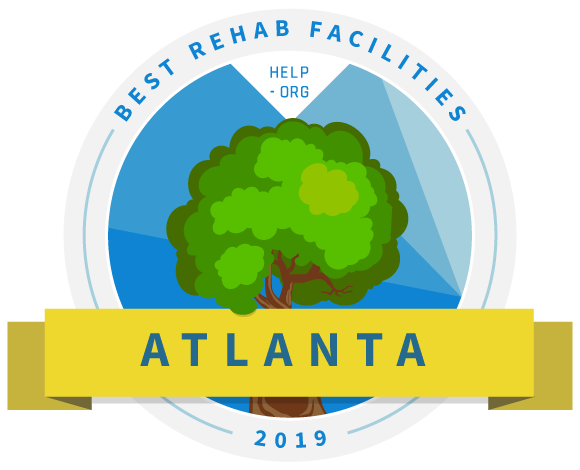With many reinforcers and conditioned stimuli, termination can be hard to attain, and regression prevails Ouzir and Errami (2016 ). Behavioral theory indicates a number of strategies that concentrates on the breaking of cyclical pattern of compound usage. Contingency management, in which clients get rewards or benefits for conference specific behavioral objectives (e.
Contingency management methods are based upon principles of behavioral pharmacology and operant conditioning, in which habits that is followed by positive repercussions is more most likely to be duplicated (Carroll, and Onken, 2005). Carroll, and Onken, (2005) in their article Behavioral Therapies for Substance abuse provides CBT intervention for substance addiction.
The specifying functions of these methods are 1) an emphasis on practical analysis of drug use, i (acupuncture & addiction treatment: what you need to know). e., comprehending drug use within the context of its antecedents and consequences, and 2) abilities training, through which the specific discovers to acknowledge the circumstances or states in which he or she is most vulnerable to substance abuse, prevent those high-risk scenarios whenever possible, and utilize a range of behavioral and cognitive methods to cope successfully with those situations if they can not be avoided.
Drug counseling and couple and household treatment likewise comes under the umbrella of behavioral interventions. The defining feature of couples and family treatments is that they deal with drug-using people in the context of household and social systems in which compound usage may establish or be maintained. (Brown, & Coldwell, 2006). This is further supported by animal research studies revealing that a boost in dopamine 2 receptors in the nucleus accumbens significantly reduces drug consumption. The brain-based medical design, to be sure, has contributed a lot to the understanding of the issue of dependency. Nevertheless, training focus solely on the brain has possibly come at the cost of a more powerful explanatory design that includes a wider variety of considerations.

The smart Trick of A Nurse Is Caring For A Client Who Is Receiving Treatment For Opioid Addiction That Nobody is Talking About

Hereditary researchers, for instance, estimate that 40-60% of the vulnerability to dependency can be associated to hereditary aspects. These price quotes include the portion of difference credited to genes as well as geneenvironment interactions. Sociological research study has likewise revealed a number of environmental aspects known to add to dependency: the schedule of drugs tends to increase rates of addiction; low socioeconomic class has been discovered to be highly related to illegal substance abuse; poor parental assistance has actually been linked to drug usage - how to raise affinity with cait after addiction treatment.
For instance, research on non-human primates reveals that social context can have profound stress-induced effects on brain dopaminergic function; specifically, dominant high status monkeys were found to be resistant to drug's reinforcing results, whereas secondary low status monkeys were shown to be susceptible to drug's reinforcing effects [19] The insight that environmental elements might contribute to addicting habits has likewise been utilized to call into question a few of the fundamental support of the brain-based medical design of dependency.
By utilizing, for example, direct electrical brain stimulation to condition rats, such research studies has illuminated the benefit system path of favorable support [20] Comparable studies have likewise been performed to explore the reinforcing homes of drugs. For example, rats and monkeys have been shown to self-administer stimulantsto the point of severe weight loss and even death [21] (which treatment is supported by the rationale that heroin addiction is metabolic disorder).
However, serious concerns have actually been raised about the construct credibility of this line of evidence. The criticism runs as follows. The rats in the studies were checked in an irregular environment, a so-called skinner box, which is isolated, stimulus impoverished, and extremely demanding. It is these environmental functions that can account for the uncommon tendency the rats displayed to self-administer drugs.
The Facts About How Many Beds Is In Kingsborough Addiction Treatment Center Revealed
In his know famous "rat park" research study, Bruce Alexander found that rats in a stimulus rich environment displayed almost no indications of dependency and utilized simply one quarter of the drug used by rats in the skinner box [22] But is this finding generalizable to humans? Obviously, duplicating the "rat park" study in human beings would be neither useful nor ethical.
During the war, substance abuse by service member had actually reached epidemic https://storeboard.com/blogs/general/fascination-about-what-is-the-latest-treatment-for-opioid-addiction/4451960 proportions: roughly 20% of soldiers had returned from war addicted to heroin [23] Was their addiction-like the rats in the Skinner box-attributable to the extremely stressful environment of war? That 95% of the same soldiers recovered from addiction, without treatment, highly link the change in environment had a strong function in their healing.
Does this mean that drug abuser are either servants to biology or slaves to their environment or some mix of the 2? Proof of the continuous capability for option in drug-addicted individuals makes complex the picture of drug addiction even further. In a traditional research study of the daily lives of drug abusers, criminologists Preble and Casey found that, for the many part, addict do not act like slaves to their addiction at all [24].
For instance, researchers checked whether providing people addicted to break drug a choice from a variety of alternative enhances that included crack, cash coupons, or merchandise coupons, would reduce crack self-administration. Researchers found that the addicts faced with a choice from alternatives did not do not have the capacity to deny crack in favor of other positive enhances.
Not known Factual Statements About How To Start A Church Based Addiction Treatment Center
One concern that may arise is whether there exists a way to arrange and comprehend the relationship in between these various dimensions of drug dependency. Michael Gazzaniga, a pioneer of research on splitbrain patients, provides a helpful method of considering the problem. Gazzaniga starts by thinking that there Substance Abuse Treatment are 3 important levels of understanding issues associated with the brain: 1) the brain 2) the mind and 3) society.
Thought about in this light, the above-stated constraints of the "ethical" model, a simply social solution, and the medical design, a purely brain-based solution, would be partial at best in that they ignore other important levels of the issue and the interactions among them. Optimally, an option to the issue of addiction would be multi-level: addressing the issue at the level of the brain, mind and society.
On the biological level, a variety of appealing interventions are offered. The most reputable of these is clinically assisted treatment (MAT). This method looks for to re-establish the balance of power in the brain by restricting the effect of drugs. For the treatment of heroin addition, for example, a number of FDA authorized interventions exist.
The benefits of this are three-fold: feelings Rehabilitation Center of ecstasy are not generated; withdrawal symptoms are blunted by the existence of the agonist on the receptor site; and the threat of abuse is low. Naltrexone, an antagonist, works by inhabiting the opioid receptor site and therefore obstructing drugs' blissful results - how much does the us spend on addiction treatment. Immunotherapies are another promising technique.